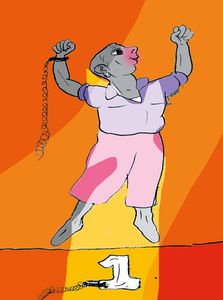India has the second-largest tribal population in the world—about 8.9 per cent of the total population. This is a section of our society that was long ignored, even though they lived amidst us. It is a fact that previous governments at the Centre were insensitive towards tribals. So much so that the tribal affairs ministry was set up only in 1999. Today, mind you, the ministry has its hands full.
Prime Minister Narendra Modi has time and again hailed the contribution of various Indian tribes across the country, especially in the freedom struggle. He has launched multiple schemes for the betterment, inclusion, development and preservation of tribal communities and their culture.
Many may think otherwise, but the USP of the NDA government is the idea of Antyodaya—framing policies in a way that it reaches the last person in the last line, and ensuring that resources are equally shared by people across the country, with due respect to different traditions and cultural practices. Like the tribal ministry, other ministries, too, have collaborated to bring about true positive change in the lives of the tribal population.
A targeted funding framework was established under the Tribal Cultural Heritage Revival Programme for channeling resources directly to tribal communities for the documentation, preservation and revitalisation of their endangered cultural traditions. More than 300 tribal heritage conservation centres have been established under the Tribal Cultural Heritage Revival Programme.
The Modi government has displayed a strong commitment to the conservation and promotion of tribal languages though a series of targeted initiatives. As part of Eklavya Model Residential Schools programme, launched in 2018, over 460 tribal languages are being preserved and taught, ensuring that indigenous diversity thrives within the formal education system.
A very interesting project by the Nehru Yuva Kendra Sangathan, which has been organising tribal youth exchange programmes for the development of tribals, has also been implemented. Passing a plan on paper is one thing but giving on-ground exposure is an effective way to instil confidence and feel included. The aim is to provide an opportunity to the tribal youth of 30 selected districts of seven states to visit various places in the country to understand the cultural ethos, languages and lifestyles of different people. Another aim of the initiative is to sensitise the tribal youth about their rich traditional and cultural heritage and enable them to preserve it for future generations.
Collaborating with the Council of Scientific and Industrial Research, the ministry of AYUSH established a comprehensive repository of codified texts translated into multiple languages, serving as a preventive measure against the misappropriation of India’s traditional medicinal wisdom. Further, the establishment of the North Eastern Institute of Ayurveda & Folk Medicine Research in Arunachal Pradesh aims to safeguard and promote the rich tapestry of folk medicine practices that are unique to the northeast. These endeavours collectively reflect a profound commitment by the government to uphold and propagate traditional healing practices while ensuring their rightful recognition and protection.
The Union cabinet has also approved the establishment of the National Institute of Sowa-Rigpa in Leh as an autonomous organisation under the Ministry of AYUSH. Sowa-Rigpa, a traditional medical system indigenous to the Himalayan region, is now extending its influence throughout the country.
With mutual collaborations between ministries and departments, the tribal population has never ever felt more included into the mainstream than now.


